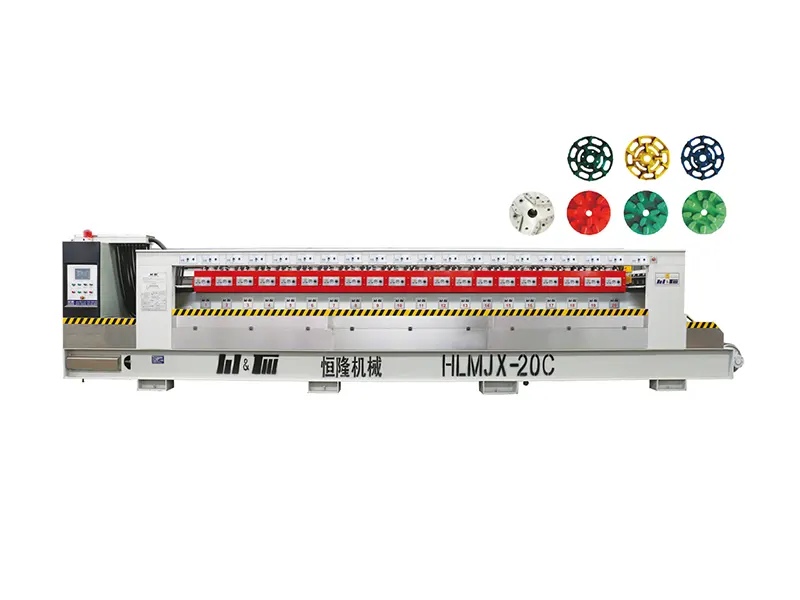Achieving a Flawless Finish with Advanced Stone Polishing Machines
Time:
Jul 17,2025
Achieving a Flawless Finish with Advanced Stone Polishing Machines
Table of Contents
- 1. Introduction to Stone Polishing
- 2. Importance of a Flawless Finish in Stonework
- 3. Types of Stone Polishing Machines
- 4. Key Features to Look For in Stone Polishing Machines
- 5. Advanced Techniques for Polishing Stone
- 6. Maintenance of Stone Polishing Machines
- 7. Safety Guidelines for Stone Polishing
- 8. The Future of Stone Polishing Technology
- 9. Conclusion
- 10. Frequently Asked Questions
1. Introduction to Stone Polishing
Stone polishing is an essential process in the stone industry, transforming rough surface materials into exquisite finishes. The process enhances the natural beauty of stones such as marble, granite, and quartz, making them ideal for various applications, including countertops, flooring, and decorative elements. With advances in technology, the market now offers a variety of **advanced stone polishing machines** designed to achieve superior results more efficiently than traditional methods.
2. Importance of a Flawless Finish in Stonework
Achieving a flawless finish is crucial not only for aesthetic appeal but also for durability. A well-polished stone surface is more resistant to stains, scratches, and moisture infiltration. This enhances the longevity of the stone and reduces maintenance efforts. In commercial settings, such as hotels and restaurants, a flawless finish creates a sense of luxury that attracts customers and enhances the overall experience.
3. Types of Stone Polishing Machines
The stone polishing industry features a variety of machines, each tailored for specific tasks. Understanding the different types can help you choose the right one for your project.
3.1. Manual Polishing Machines
Manual polishing machines are lightweight and portable, making them ideal for smaller projects or onsite work. While they require more physical effort and skill, they offer precise control over the polishing process.
3.2. Semi-Automatic Polishing Machines
These machines bridge the gap between manual and fully automatic systems. They automate some functions while allowing operators to maintain control over specific tasks, providing a balanced approach for efficiency and quality.
3.3. Fully Automatic Polishing Machines
Designed for high-volume production, fully automatic stone polishing machines can handle large slabs with minimal human intervention. They offer consistency and speed, making them suitable for commercial stone processing operations.
4. Key Features to Look For in Stone Polishing Machines
When selecting a stone polishing machine, several features should be prioritized to ensure optimal performance:
4.1. Variable Speed Control
Machines with variable speed settings allow for greater flexibility, enabling operators to adjust the polishing speed according to the type of stone and desired finish.
4.2. Durable Construction
Look for machines made from high-quality materials that can withstand the rigors of stone polishing. Stainless steel and heavy-duty plastics are ideal for ensuring longevity and reliability.
4.3. Efficient Dust Collection Systems
An effective dust collection system is crucial for maintaining a clean workspace and ensuring operator safety. Machines with integrated dust collection minimize airborne particles, promoting a healthier work environment.
4.4. User-Friendly Controls
Intuitive controls simplify operation, making it easier for operators to navigate different settings and functions, regardless of their experience level.
5. Advanced Techniques for Polishing Stone
To achieve a flawless finish, employing advanced polishing techniques is essential. Here are some methods that can enhance the quality of your work:
5.1. Diamond Polishing Pads
Diamond polishing pads are incredibly effective for achieving high gloss finishes. They come in various grits, allowing for a gradual refinement of the stone surface.
5.2. Wet Polishing
Wet polishing utilizes water to cool the surface and reduce dust, leading to a smoother finish. This technique is particularly beneficial for softer stones, as it minimizes the risk of scratching.
5.3. Buffing Techniques
After the initial polishing, buffing with a fine pad can enhance shine and clarity. This step is crucial for achieving that mirror-like finish that is often desired for high-end applications.
6. Maintenance of Stone Polishing Machines
Proper maintenance of stone polishing machines ensures they operate efficiently and last longer. Here are some essential maintenance tips:
6.1. Regular Cleaning
Cleaning the machine after each use prevents the buildup of dust and debris, which can impair performance.
6.2. Inspecting Components
Regularly inspect components like pads, belts, and brushes for wear and tear. Replacing worn parts promptly maintains consistent polishing quality.
6.3. Lubrication
Follow the manufacturer’s guidelines for lubricating moving parts to reduce friction and prevent overheating.
7. Safety Guidelines for Stone Polishing
Maintaining safety standards while operating stone polishing machines is paramount. Follow these guidelines to ensure a safe working environment:
7.1. Personal Protective Equipment (PPE)
Always wear appropriate PPE, including safety goggles, gloves, and dust masks, to protect against dust and debris.
7.2. Proper Ventilation
Ensure the workspace is well-ventilated to minimize the accumulation of dust and fumes.
7.3. Machine Training
Operators should receive thorough training on machine operation and safety practices to prevent accidents and ensure optimal performance.
8. The Future of Stone Polishing Technology
The stone polishing industry is continuously evolving, driven by technological advancements. Future trends may include:
8.1. Robotics and Automation
Incorporating robotics into stone polishing can enhance precision and efficiency, reducing human errors and increasing production rates.
8.2. Eco-Friendly Solutions
As sustainability becomes increasingly important, future polishing machines may utilize environmentally friendly materials and processes, providing a greener option for stone finishing.
8.3. IoT Integration
The integration of the Internet of Things (IoT) in stone polishing machines can enable remote monitoring and control, leading to smarter production processes.
9. Conclusion
Achieving a flawless finish with advanced stone polishing machines is not only about the technology but also understanding the nuances of stone and the polishing process. By selecting the right equipment, employing advanced techniques, and adhering to safety guidelines, we can elevate the quality of our stonework significantly. The future of stone polishing holds exciting possibilities, promising even greater efficiency and sustainability in our projects.
10. Frequently Asked Questions
10.1. What types of stones can be polished using these machines?
Most machines can polish a variety of stones, including granite, marble, limestone, and quartz.
10.2. How often should I maintain my polishing machine?
Regular maintenance after each use, along with a thorough inspection at least once a month, is recommended.
10.3. Can I use the same pads for different types of stone?
While some pads can be versatile, it’s best to use specific pads tailored for each stone type to achieve optimal results.
10.4. Are there specific techniques for polishing softer stones?
Yes, wet polishing is recommended for softer stones to minimize scratching and achieve a smoother finish.
10.5. What safety equipment do I need while polishing stone?
Essential safety equipment includes safety goggles, gloves, and dust masks to protect against dust and debris during the polishing process.






